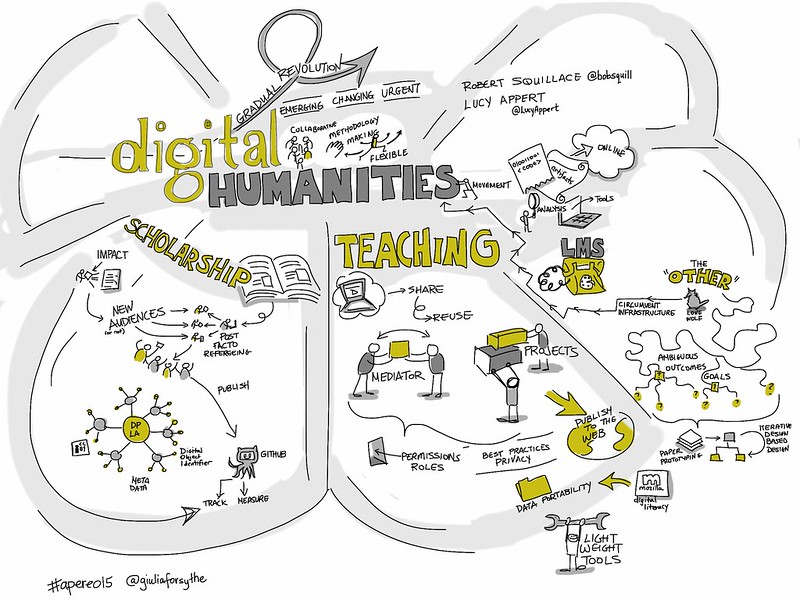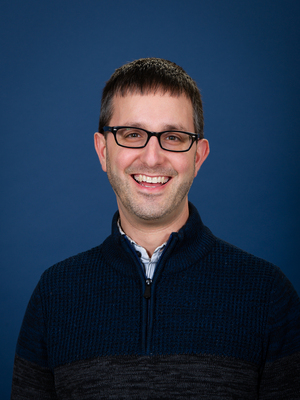Let me begin by expressing my great appreciation for all that Christopher Cantwell and Kristian Peterson have done to advance the digital study of religion. As their interview with Dan Gorman makes clear, Digital Humanities and Research Methods in Religious Studies offers a compelling “why to” guide for DH novices interested in exploring how digital tools and methods can enhance their scholarship. But this is only one of several ways Cantwell and Peterson have offered invaluable service to our field. Besides the examples set by their own scholarship, including Gathering Places and the Women of Islamic Studies database, they have worked tirelessly to ensure that all digital scholarship in the study of religion be taken more seriously. The standards they helped draft for the American Academy of Religion really are exemplary, and I can say that my own department consulted them regularly as we recently revised our promotion and tenure documents. I have also returned repeatedly to the 2015 state-of-the-field report Cantwell produced with Hussein Rashid for the Social Scientific Research Council and have taught with it in courses at the undergraduate and graduate levels. I now plan to incorporate this RSP interview into my teaching, as well.
In fact, it was hard to know what to say in response to their interview, for I found myself mostly nodding in agreement as I listened. Cantwell and Peterson, in conversation with Gorman, do a fantastic job explicating the numerous opportunities and challenges confronting any scholar who makes the plunge into digital methods. Everything they say resonated with my own experience at the helm of a large-scale digital humanities research initiative.
Since 2014, I have co-directed the American Religious Sounds Project with Professor Amy DeRogatis of Michigan State University, which asks what religion sounds like in the US and what we can learn by listening for it. Our teams of faculty, staff, and student researchers have produced hundreds of audio field recordings, documenting sounds of American religious life across a wide range of spaces and communities. We have integrated these recordings, along with teaching resources, curated gallery exhibits, and written reflections, onto a custom-built digital platform housed at Ohio State University.1
When DeRogatis and I began work on this project, we were complete novices when it came to digital methods and scholarship. Now, several years later, we have learned so much about the issues Cantwell and Peterson discuss, often through excruciating trial and error. I heartily affirm what they say about the pedagogical value of digital humanities scholarship and the ways it blurs the boundaries among teaching, research, and service. Involving students in a public-facing, community-engaged research project has offered an excellent way of introducing them to basic theoretical questions in the academic study of religion, while also helping them appreciate the intellectual and ethical stakes of our work. I also found myself agreeing with everything Cantwell and Peterson say about collaboration and credit, sustainability and preservation, and funding and institutional context. These are undoubtedly the most pressing issues facing all of us doing work in this area. And yes, yes, a thousand times yes, to DH librarians and archivists as present and future stars of our field. Take note, aspiring PhD students!
Let me just briefly touch on a few issues that Cantwell and Peterson did not get an opportunity to discuss in their interview that I think warrant further consideration. First is the question of accessibility. For whom is our digital scholarship accessible, and how should accessibility concerns shape our work? This is an issue to which DH scholars are beginning to turn their attention but requires much more sustained engagement. For example, Cantwell and Peterson note the popularity of mapping in scholarship on religion, yet we have found that many existing mapping tools do not meet minimum institutional accessibility standards. They pose a number of challenges for screen readers and other adaptive technologies. Best practices are also still evolving around alt-text descriptions for image and audio, especially when it comes to descriptions of race, gender, and disability. I admit that my own team was not sufficiently attentive to these matters when we began our work seven years ago, and it has taken a lot of time—and resources—to address them later. These issues demand much more sustained attention from scholars of religion. I encourage folks getting started on new projects to begin thinking about these challenges from the outset. It would be great to have a forum within the American Academy of Religion for us to discuss them together.
Second, I want to ask what the crisis of contingent labor means for the possibility of doing digital scholarship. As Cantwell and Peterson discuss, DH projects can require a great deal of time and financial support, though, as they say, that does not have to be the case. When DeRogatis and I began our work, she had tenure, and I was about to receive tenure on the basis of our more traditional print scholarship (books and peer-reviewed articles). We were at ideal times in our careers to experiment with new methods and approaches that might not be taken as seriously by our peers. By virtue of our full-time employment by R1 research universities, we had access to ample internal and external grant funding that would not have been available to us otherwise. And we’ve been able to secure long-term commitments from our institutions regarding the sustainability and preservation of our work. Few of those privileges are available to contingent faculty, or at least certainly not on the same terms. We have tried to use our funding to create opportunities for others but would readily admit it’s not enough. In our eagerness and enthusiasm to advance digital methods in the study of religion, we need to find ways to avoid further deepening the structural inequalities that we all know are features of contemporary academic life.
Finally, I want to conclude with a question that I don’t hear asked very often, which has to do with the affective experience of doing digital scholarship. That is, apart from the questions of why or how to do DH work, I want to talk more about what it feels like to do this work. For myself, I can say it has been exhausting. Rewarding, yes, but exhausting. I know this is true of academic labor in general, but I think it’s worth thinking more about the particular aspects of DH work that make it so. Collaborating with others. Navigating different personalities and interests. Constantly translating our research into terms that others can understand. Constantly learning new things, new tools, new systems only to find out that many of the solutions you’ve stumbled across won’t work for other unforeseen reasons. Making mistake after mistake after mistake. Spending weeks on questions of digital design or font choice or metadata categories or licensing agreements and having to remind yourself that all of that matters and all of it should count as forms of scholarship – even though they often don’t. Never feeling like you’re finished because the work is always iterative and there are always new ways to tinker and tweak and update. Worrying about whether any of the work you’re doing is worth it or will be taken seriously by others. And I say all of this as someone who has tenure at a university and in a department that has been remarkably supportive of my work and has benefitted from extraordinary levels of external grant funding. I know that I‘ve had every imaginable structural advantage to make my work easier. And yet, and still, it is exhausting. That seems worth naming, too.
References
- Full disclosure: Christopher Cantwell serves on our ARSP advisory board and has been a valued conversation partner throughout the life of the project. In addition, we were invited to contribute a chapter to Cantwell and Peterson’s volume though had to decline due to other commitments.



